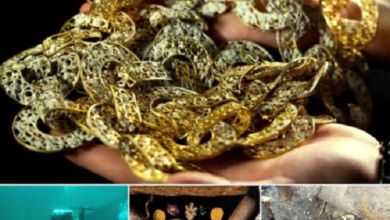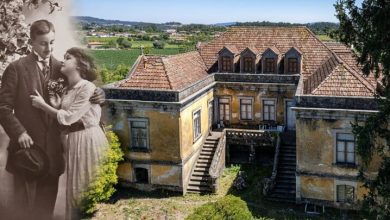Uncategorized
Stone of Scone: A British Isles Ancient Mystery
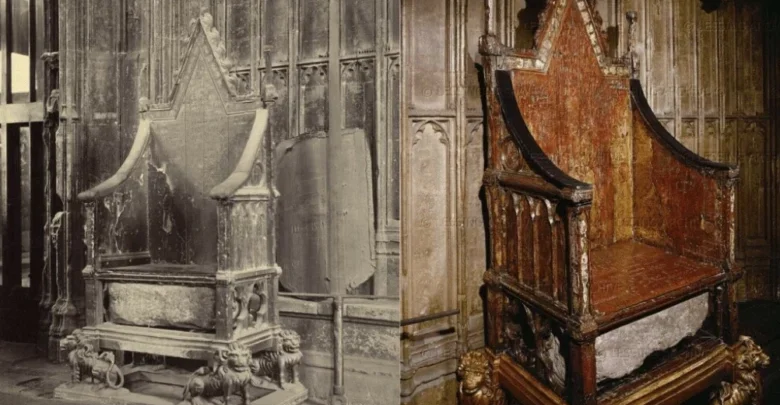
One of the most revered symbols of the kingdom of Scotland and the heritage of the Scots is the Stone of Scone. This 336-pound block of red sandstone was the seat upon which the ancient kings of Scotland were crowned. It is also known as the Stone of Destiny and until recently, it resided in Westminster Abbey in London.
This cherished stone has a colorful history. Where did it originate and where is the real stone?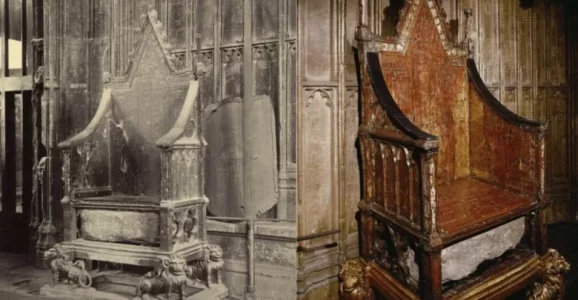
Origin
The origin of the Stone of Scone is hard to determine, due to its antiquity, but legends abound. It first appears in ancient Celtic myths concerning an assembly of gods known as the Tuatha de Danaan. One of the Tuatha’s supernatural possessions was a stone that supposedly cried out whenever the rightful king stepped on it. This stone, according to one version of the myth, was taken from Ireland into Scotland. It was probably either by force or as a spoil of victory from a successful battle. In another version, the Tuatha were fleeing from Greece and journeyed to Scotland with the Stone among their possessions.
Regardless of how it arrived in Scotland, the Stone became an important symbol of Scottish rule. It was kept in a variety of places throughout Scotland, finally being brought to Scone by King Kenneth MacAlpin for his coronation in the 9th century.
The Stone of Scone Goes From Scotland to England
It remained at Scone for centuries until 1296, when King Edward I of England sacked Scotland and took the Stone as a spoil of war to Westminster Abbey in London. His army’s horses had barely reached English soil when he made a sudden and mysterious return trip to Scone. Rumors ran rampant that the stone Edward carried was not the real Stone. It may have been a copy sculpted by clerics in Scone who had heard of Edward’s coming. They had quickly forged a duplicate, hiding the true Stone away until a time when the sovereignty of Scotland was restored. It is not known what really transpired on Edward’s puzzling second trip to Scone, but he eventually returned to London with a stone—real or not—in tow.
For the six and a half centuries after King Edward I captured it, the Stone remained in Westminster Abbey. It was encased beneath the seat of the throne upon which the monarchs of England were crowned. Its primary connection with Scotland has always been acknowledged, however, and even Shakespeare refers indirectly to the Stone in his play “Macbeth,” where Scone is named as the place for both Macbeth’s and Malcolm’s coronations.
Stealing the Stone Back
Christmas Day of 1950 marked the next and most notable chapter in the Stone’s history. On that night, four patriotic university students from Glasgow masterminded a plot to steal the Stone and bring it back to Scotland. They were Kay Matheson, Ian Hamilton, Gavin Vernon, and Alan Stuart.
After midnight, the students pried open a side door in the Abbey. They managed to remove the Stone from its placement within the coronation chair. Although the stone fell and broke into two pieces, they were able to remove it from the premises.
The police reaction was swift and predictable. Guessing the Stone would be taken to Scotland, they immediately set up blockades to check all cars going into Scotland, and began questioning leaders of the contemporary Scottish self-rule movement.
Kay Matheson had the stone. The students had split up, and driving alone, Kay was able to make it through the police checkpoints and make her way back into Scotland. Once they had regrouped in Scotland, they hid the stone and then sent a petition to King George VI. It said they would disclose the Stone’s location if the king would promise to let the Stone remain in Scotland.
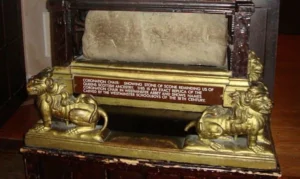
Stone of Scone Returns to Its Home
London refused. So, after several months, the four students decided that the Stone would not serve its purpose of rallying Scottish support if it had to stay hidden. So they drove the Stone to Abroath Abbey and put it on the altar draped in a Scottish flag.
The Stone was quickly whisked back to London and put back into the coronation chair.
Shortly after the Stone’s return, just as it had 650 years earlier, speculation began that the real Stone had been hidden away by the four students and a fake was in London–a topic on which the students have steadfastly refused to comment.
They were never prosecuted because officials sensed that there was a strong current of support among the Scottish folks for what they had done.
In November of 1996, the Stone was returned to Scotland and is now housed in Edinburgh Castle. But the possibility exists that the true Stone of Scone never left Scotland and remains hidden until an opportune time for its reappearance.
